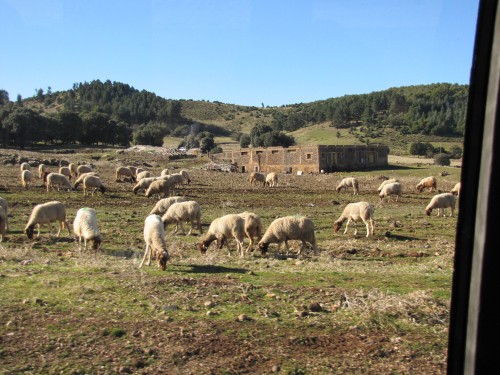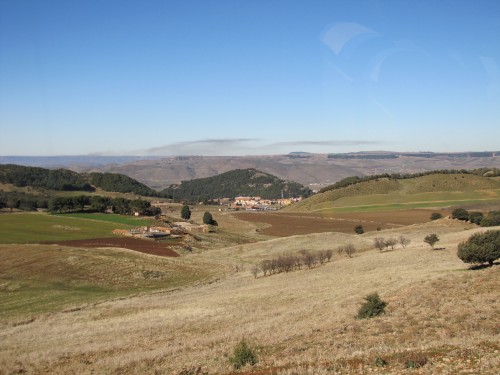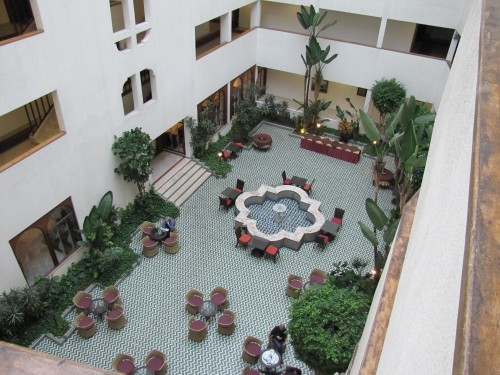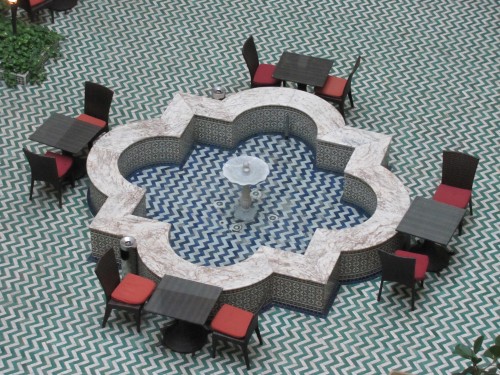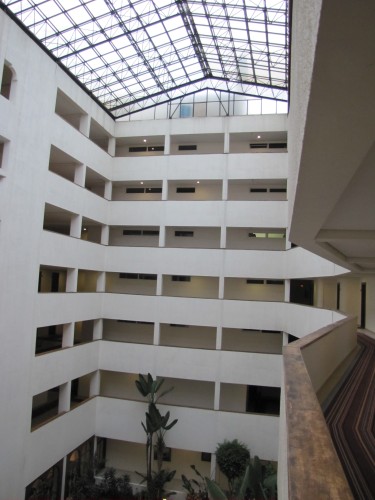Country scenes in eastern Morocco
I come from a farming background. The first 15 or so years of my life were spent living on my father’s farm in the Murray Mallee district of South Australia. Although I spent most of my working life in a school classroom, I still have a close affinity with the land. Today in retirement I still own a small “farm”, albeit only 5 acres in size and I no longer keep any chickens, ducks and sheep like I used to some years ago.
Wherever we travel I take a keen interest in the countryside as we journey, keeping an eye out not only for birds (birding is a passion of mine) but also casting an eye over the farming countryside. So it was with great interest that I watched the passing farmland practices while journeying through Morocco. Previously I have commented on the similarities that the rural environment in Morocco has with parts of South Australia. There are, however, many contrasts too, as illustrated in today’s photos.
I don’t know what breed of sheep are shown in the photo above, but they are significantly different from the common Merino breed we have here in SA. We also saw many goats in Morocco, something you tend not to see in the cereal growing areas at home.
Casablanca
After settling into our hotel in Casablanca, we went for a short pre-dinner walk despite the light drizzle. I just had to take the photos of the inside of the hotel before we left; the inner courtyard was delightful – our first taste of the mosaics so iconic of Morocco. In the coming days and weeks on this site I will be sharing many, many more photos of beautiful buildings and more, more, more mosaics. Stay tuned.
One of the attractions of coming to Morocco as a part of our itinerary was to visit exotic Casablanca. I guess I had an idealised vision of this city based on the romantic notions brought about by the classic movie of the same name. The movie’s depiction of this city is far removed from reality by time and modernisation. Down-town Casablanca is as modern as any city elsewhere in the world.
Some day I would like to return and explore this city in more detail than the few hours we spent there on this trip.
Magical Morocco
Magical Morocco!
That says it all.
From visiting our daughter in Addis Ababa, Ethiopia for two weeks we flew out in the early hours to Casablanca. We couldn’t get a direct flight so we had to go via Cairo. Sadly we didn’t have more than a few hours there – and spent all of our “visit” to Egypt in the transit lounge. I was also disappointed that we were on the wrong side of the plane coming into Cairo. The pilot announced that the pyramids could be see off to the left; we were sitting on the right-hand side of the plane. The pyramids will have to wait until another trip; I guess they’re not going anywhere in a hurry.
The flights to Casablanca were uneventful. Getting through customs, however, took forever. After the delay we were united again with our daughter who had arrived on a different flight as we couldn’t get seats on the same flights. We also met our tour guide for our time in Morocco, Said, who we instantly took a liking to; he was the perfect guide for our two week tour of his country.
As we left the airport our first views of Morocco were rain soaked. This was the first rain we’d had since leaving home, and the last for the whole trip – except for a light drizzle one day a few weeks later. Our driver quickly whisked us through down-town Casablanca to our hotel for the night, and we quickly settled into our very comfortable rooms.
Today I’ve posted several photos taken of Casablanca from the balcony of our hotel. Not very exciting, and rain splattered as well.
Travelling by car in Addis Ababa
One of the interesting – and challenging – aspects of visiting a city like Addis Ababa in Ethiopia is travelling by car in the streets of the city. Because I was only staying for a few weeks last December I never applied for an international licence. Consequently I never had the opportunity to actually take the wheel of a car while there. I did, however, travel many times in cars with other drivers. Like most developing countries, driving in the traffic conditions in Addis Ababa is quite an experience.
In the photo above I have shown a part of the major ring route around the city. At the time this photo was taken the traffic was very light. All seems very organised and safe. All is not what it seems.
You will observe lanes marked on the road. This is not only misleading, it is totally inconsequential. Few drivers, if any, actually drive in the marked lanes. I quickly figured out that the markings were suggestions only; no-one actually drove within the lane markings. It is quite amazing that they don’t have far more serious accidents.
Cars, trucks, buses and other vehicles do not seem to be the major hazards when driving in Ethiopia. Two hazards stood out for me: pedestrians and donkeys – see the photo below. Pedestrians tend to use the road as a footpath. Not surprising – footpaths are so poorly maintained that no-one would want to walk on them. Or are they are totally non-existent.
And there seemed to be random donkeys crossing roads everywhere.
